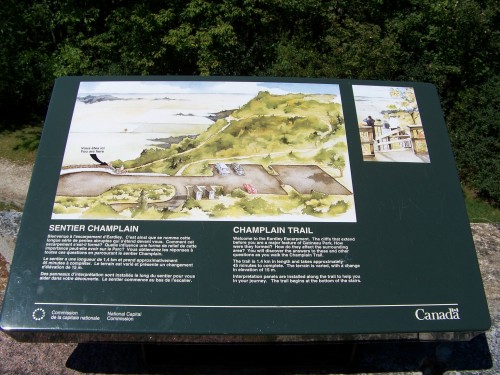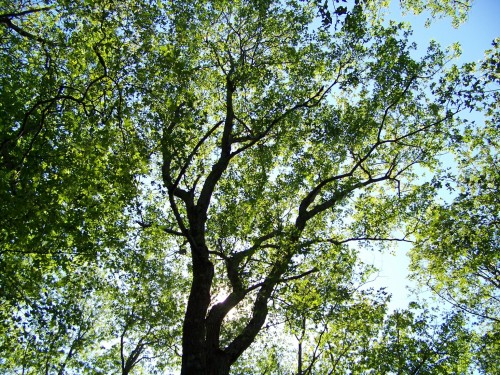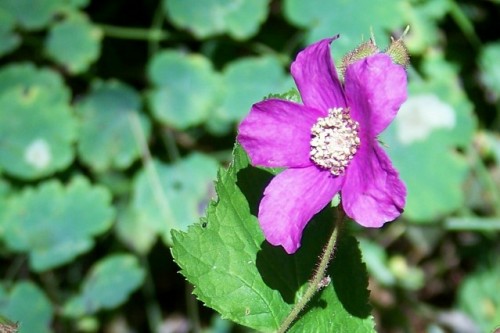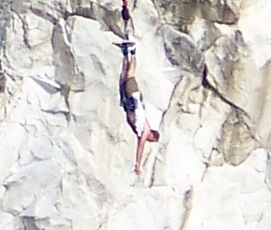On the weekend, the weather was just too perfect to pass up the opportunity to enjoy the outdoors. We travelled up to Gatineau Park, north of Ottawa and spent a relaxing afternoon there. At 33,000 hectares, the park is huge. We were just able to see some of the attractions in the southern section, which features easy-access hiking trails and a scenic driving route that winds through the hills and past wetlands and lakes. Our first stop was the Champlain Lookout, where you can get an idea of the geology that shapes the region.
Gatineau Park is situated at the junction of the Canadian Shield and the St. Lawrence Lowlands. The Eardley Escarpment marks the edge of the Shield, and the lookout offers a view of the escarpment to the right and the lowlands stretching out to the Ottawa River before you. The Eardley Escarpment is the richest and most biologically diverse area in the park. With a height of about 300 metres, the escarpment has its own warm, dry microclimate. In winter, about 80% of the deer in the park take shelter on the escarpment.
Signs at the lookout explain how the escarpment and lowlands were formed over several hundred million years as the earth shifted and glaciers eroded the surface. The sign above shows the route of a hiking trail that starts at the lookout and we decided to follow it as it winds through a section of the escarpment.
Having moved to the Ottawa region from west of Toronto, we are familiar with the Niagara Escarpment, which runs from the Niagara region to Tobermory on Lake Huron. I was struck by the similarities between the too escarpments. The view from Rattlesnake Point on the Niagara Escarpment, looking out over farmland (and now a whole lot of development) down towards Lake Ontario is very similar to the view from Champlain Lookout.
The forest is similar too. Both escarpments feature a mix of deciduous trees with Sugar Maple, smooth-barked Beech and Black Cherry dominating. The Black Cherry trees are easy to pick out, with their dark bark in rough, squarish scales.
The trail follows the escarpment and leads to another lookout platform. From there, the trail leads away from the escarpment edge and loops back to the parking lot.
While the forest shares similarities with the Niagara Escarpment where we had hiked in the past, there were also new things to see. I photographed this yellow flowerhead and checked on its identification when I got home.
It appears to be Hairy, or Upland Goldenrod (Solidago hispida). I’m used to goldenrod having a bushy head, like the flowers shown below, which grow in the fields around the house.
However, there are quite a few different goldenrod species. About a dozen grow in Ontario. Another plant that roused my curiosity featured pretty pink flowers.
It had large, maple-shaped leaves and berries. The fruit looked like fat, flattened raspberries. I tasted one. It tasted like a raspberry. If it looks like a raspberry and tastes like a raspberry, it probably IS a raspberry, but not like any I remembered seeing.
In fact, it is purple-flowering raspberry (Rubus odoratus), a native perennial shrub. Raspberries belong to the rose family, and you can really see the family resemblance in the flowers. Speaking of maple leaves, I also spotted trees with these tulip-like leaves.
They belong to Striped Maple (Acer pensylvanicum). Striped maples have the coolest bark, with the young trees striped green and white. Older trees have brown and white bark. Also known as moosewood, this tree grows as a small understory tree or shrub in deciduous forests, where it is very shade tolerant. It likes moist ground and prefers slopes, so the escarpment forest offers ideal conditions.
After completing our hike, we drove down to the Mackenzie King estate, but that is a story for another post. However, I will include here our last stop of the day. We drove a bit north of the park to watch bungee jumping! I’ve never seen this in person. The Great Canadian Bungee jump opened in 1992 at Morrison’s Quarry. The jumpers jump from a crane-like structure that reaches out high above the water filling the quarry. A pick-up boat waits to retrieve the jumpers and bring them to the dock. You can just see the boat on the water, to the right of the picture. The jump is 200 feet, with a 160 foot rebound.
It was a perfect day, and there was a lineup of adventurous, immortal young people waiting for their turn to take the plunge. Just watching was excitement enough for me! There’s a person dangling upside down on the end of that bungee cord. The daredevils seemed to be having a lot of fun.














